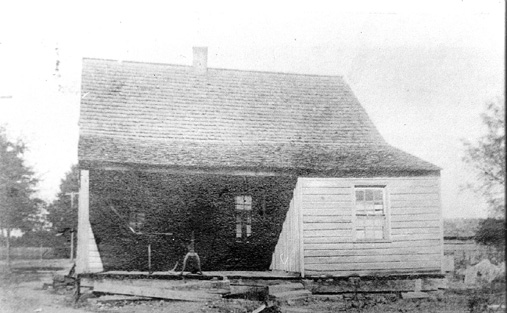
First home of The Clarke County Democrat, 1856-1912
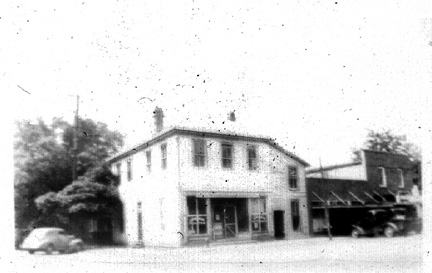
Second home of The Clarke County Democrat, 1912-1941
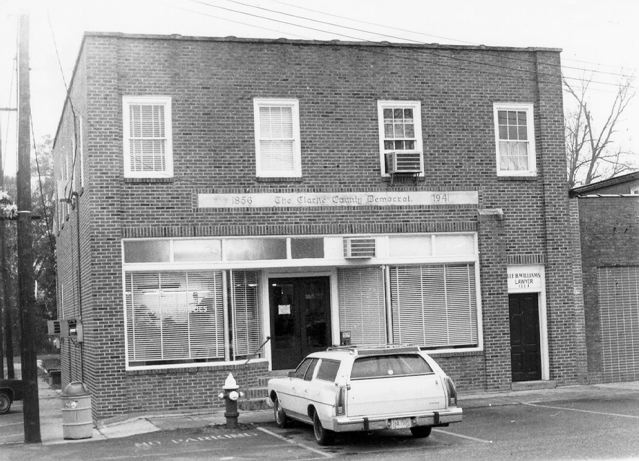
Third home of The Clarke County Democrat 1941-1992
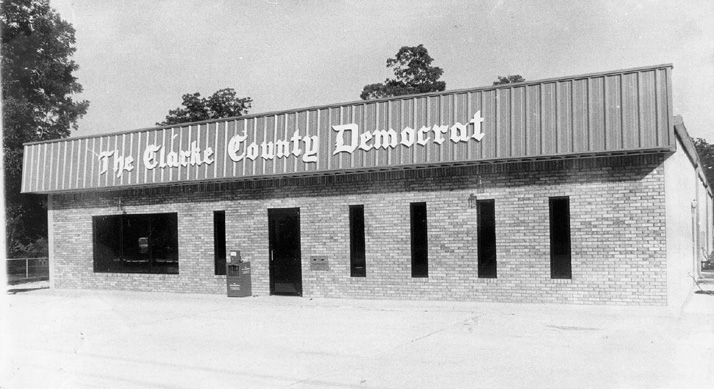
Home of The Clarke County Democrat, 1992-present

You
are invited
to the
150th Anniversary Celebration
of
The Clarke County Democrat
Thursday, Feb. 2, 2006
3 p.m. to 6 p.m.
at
261 N. Jackson St.
Grove Hill, Ala. 36451
Newspaper will
celebrate
150th birthday Feb. 2
The
Clarke County Democrat
By Jim Cox
Publisher and Editor
The Clarke County Democrat has been in its 150th year of publication
for nearly a year now, edging toward its 150th birthday, which will be
celebrated Thursday, Feb. 2 when the newspaper issues Vol. 151, No. 1.
The newspaper was first published on Jan. 31, 1856 by newspaperman
Isaac Grant who moved here from Marengo County.
Grant would be editor and publisher until his death in 1907, 51 years.
At his death, his grandson, George Carleton, took over and would
publish the paper for a remarkable 65 years. Carleton died in late 1972
and his widow, Laurie Carleton, and son, George Jr., published the
paper for a few months before selling it to R. W. “Bob” McGwier in
early 1973.
The current editor and publisher, Jim Cox, started working at the paper
in 1981 and purchased it from McGwier in 1984.
To mark the anniversary, the newspaper will host a reception from 3
until 6 p.m. on Thursday, Feb. 2. Readers, advertisers and others are
invited to come and help Clarke County’s oldest business institution
and one of the oldest weekly newspapers in Alabama celebrate the
milestone accomplishment.
The newspaper will publish a special anniversary edition on Feb. 2.
Readers are invited to submit their thoughts on the newspaper and what
it has meant to them, their families and the community. Comments and
letters will be published in the special issue. The deadline is Monday,
Jan. 23. Bring them by the office at 261 N. Jackson Street; mail to
P.O. Box 39, Grove Hill, Ala. 36451; fax to 251-275-3060; or e-mail to
ccdemo@mygalaxyexpress.com.
For information on how you or your business can participate in this
special section—a historical review of the county and region—contact
the newspaper at 251-275-3375. The advertising deadline is also Jan.
23.
****
In addition, Democrat Publisher Jim Cox will relate the history of the
newspaper and display old copies at the Clarke County Historical
Society’s monthly meeting, Sunday, Jan. 29 at 2:30 p.m. at the Grove
Hill Town Hall.
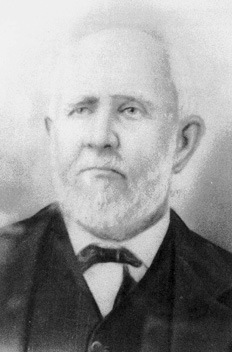
Isaac Grant
publisher 1856-1907
Happy
birthday, The Clarke County Democrat
By
Ed Williams
Even The New York Times has not had the impact that you've had these 150 years.
When I tell longtime friend and editor Jim Cox that The Clarke County Democrat is one of the best weekly newspapers in the country, I am not kidding. I use the newspaper in class as an example of what a community newspaper ought to be.
It's true that American journalism has its great metropolitan newspapers, but for the most part we are a nation of small town newspapers. The New York Times doesn't have the opportunity to make a difference nearly as much as a weekly newspaper like The Clarke County Democrat.
And what's the last newspaper you've read from front to back, The Clarke County Democrat or The New York Times?
We love our community newspapers.
The late Gov. George C. Wallace used to brag to the national press about his hometown newspaper in Clayton, Alabama. Once when Wallace the presidential candidate was being interviewed on the national TV program “Meet the Press,” he was asked to name his favorite newspaper. Wallace’s quick and feisty answer: “My hometown newspaper, The Clayton Record, Barbour County, Alabama.”
After that program was aired on NBC, the late Mrs. Bertie Parish, longtime editor of The Clayton Record, told me that her weekly newspaper got subscriptions from all over the United States, and even from the Soviet Union.
The hometown newspaper is where most readers turn to be informed, entertained and influenced. Small town newspapers have a role much different from the metropolitan dailies. Much of the news you read in The Clarke County Democrat would never appear in The Birmingham News, Montgomery Advertiser or Mobile Register. And certainly not in The New York Times.
One of my favorite items in weekly newspapers are the “personals.” I look forward to Mrs. Billie Reid’s personals column from Coffeeville-- who visited who, who went on a shopping trip to Mobile, who’s been on vacation, local students who attended church last Sunday while home from college, who's sick in the hospital.
I like to read the obituaries in The Democrat, even if I don’t know the deceased. The obits chronicle the importance and worth of people of all walks of life, unlike the boring and tedious obituaries in big city dailies.
The saying goes that most peoples’ names are only published in the paper twice -- when they’re born and when they die. As a community newspaper editor myself before joining Auburn University’s journalism faculty, I learned that one of the worst mistakes a newspaper can commit is to misspell a name or get a fact wrong in a birth announcement or an obituary.
I like to look at photographs in The Democrat. Especially big vegetables. Whopper watermelons, cantaloupe, tomatoes, turnips, sweet potatoes – you name it.
I also enjoy the dead animal pictures. The late Democrat editor, Mr. George Carleton, was famous his prowess as a turkey hunter and for his turkey photos that included the weight of the bird and the length of his beard. Deer: its size, weight, points, what shot with. Fish: Where caught, and what the whopper fish was caught with. Rattlesnakes: Length, number of rattles, where killed.
The typical community newspaper contains a record of weekly events, some profound, some not so profound, that influence our lives. While working at community newspapers in Jackson, Brewton and Andalusia, I wrote stories about dinner on the grounds, cemetery cleanings and decoration day on the first Sunday in May.
About this time of year, I eagerly await a story in The Democrat about the arrival of the first Purple Martin scout of the year. Like the groundhog’s shadow in other parts of the country, in southwest Alabama it means that spring is coming.
Through the years I’ve enjoyed the stories in The Democrat on sightings of the first hummingbird in the spring, on Sacred Harp singings, whippoorwill storms, tent revivals, rolling stores and cane syrup makings.
The Democrat during these 150 years has recorded the kinds of things that really matter to people --births, deaths, weddings, a photo of five generations of a family that’s clipped from the paper and tucked away in the family Bible to be kept for generations. Jim Cox and other good community newspapermen refer to it as “family Bible” or “refrigerator journalism.” A good newspaperman wants his paper to be on every refrigerator door in the county.
There was a time when most small-town newspapers were locally owned, but that is rapidly becoming a thing of the past. I don't know the percent of newspapers in Alabama that is locally owned, but it is a decreasing number. Fortunately for Clarke County and its readers, The Democrat and the county’s two other weeklies are home owned. I hope that Clarke County subscribers appreciate that fact.
A community newspaper shouldn't try to act like a big city paper. While the small-town newspaper must print the so-called hard news, it has a greater obligation to report the little things -- school news, local sports, social items, big snakes and turnips, catfish, turkeys and 8-point bucks.
I look forward to my copy of The Democrat when it arrives in our journalism department office at Auburn University each week, and I treasure its homey, conversational flavor.
Happy birthday, The Clarke County Democrat. And many more.
(Ed Williams began his newspaper career in 1976, 30 years ago this spring, at The South Alabamian in Jackson. He is a professor of journalism at Auburn University and author of the Alabama Press Association 125th anniversary book, “The Press of Alabama.”
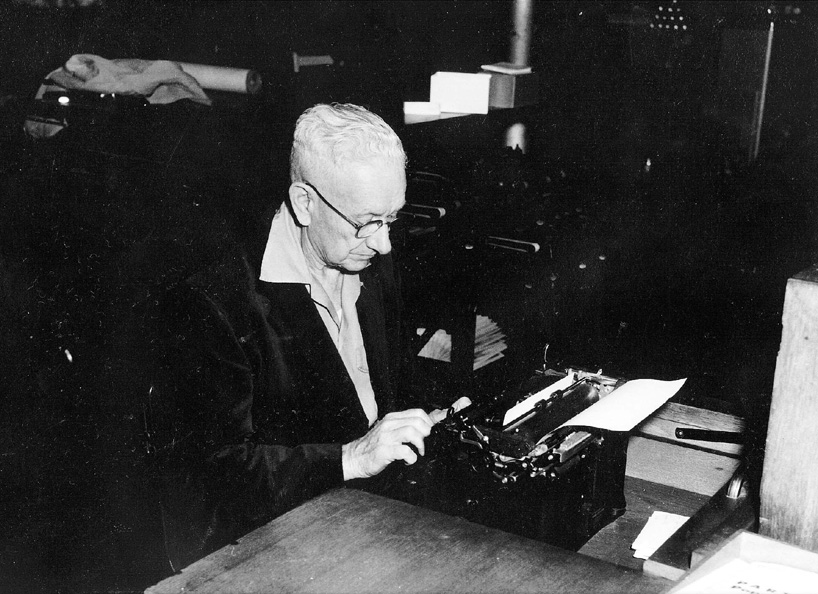
George Carleton. publisher
1908-1972
So many memories of Carleton and The Democrat
By Kathryn Tucker Windham
When I was growing up in Thomasville, my father (Jim Tucker) always
subscribed to The Clarke County Democrat. He said he needed to keep track
of what was happening in the county seat.
I knew and enjoyed and admired George Carleton from the time I was a little
girl. He and Laurie lived across the street from my grandparents, the Rev.
and Mrs. Lee Tucker, in Grove Hill, and on Sunday afternoons we would drive
to Grove Hill to visit my grandparents. I would play in their yard, The
Carletons’ niece, Carleton Farrish, was one my favorite playmates. I also
had several Tucker cousins in Grove Hill.
It was George Carleton who said to me when I was college-age, and was
writing feature stories as a stringer for state newspapers, “Don’t ever run
the risk of spoiling a good story by investigating it too closely."”
Incidentally, I was paid ten cents per column inch for my stories back then.
George often practiced what he preached when he wrote fishing, hunting and
animal stories from Clarke County.
He and Glenn Stanley, editor of The Greenville Advocate, carried on a
rivalry for years about which area produced the best nature stories. Their
exchanges were classic. George was a real authority on purple martins. He
liked to watch and report on the habits of these birds. When George died,
Laurie had a purple martin house on a tall pole placed at the head of his
grave.
George not only studied nature, he was a student of human behavior, finding
something to praise in each of God’s creatures.
So many memories!
Famous for her ghost stories, folk tales and stories of Southern living,
Clarke County native Kathryn Tucker Windham is “Alabama’s Storyteller.”
She worked forThe Alabama Journal, The birmingham News
and other newspapers in the state.
It's the printed word that makes the difference
“In my lifetime I have seen the office change from a hand-operated printing shop to a mechanized shop. We now have individual motors for everything in the shop, from the adding machine to the big press. There is even a motor in the water cooler, and electrical energy to operate the timer in the darkroom and the clock on the wall.
“There are electric heaters to melt metal in the Linotype machine and the stereotype caster, the mat caster, and the stylus in the engraving machine. There are electric motors in the butane heaters. There are at least 15 motors, not counting the 10 in the electric fans and the two in the heaters.
“The world has come a long way since this newspaper came out with its first edition, but we seriously doubt that this Number 1 of Volume 90 is an improvement over Number 1 of Volume 1.
“It employs modern methods, but it’s the printed word that makes the difference, not how it is produced.”
--J. Glenn Stanley, 1894-1967
Editor, The Greenville Advocate
APA president, 1963-1964
(From an editorial written on the 90th anniversary of
The Greenville Advocate, November 1954)
-- From "The Press of Alabama,"
Chapter 6
by Ed Williams
From Linotype to computers
By Jim Cox
changed greatly in the nearly 30 years I've been in the business.
When I started working at The Democrat in 1981, the old Linotype was still
used for some commercial printing jobs. Just from the little bit of
letterpress printing that I saw Mike Williamson doing, I realized it must
have been a tremendous job getting the paper out every week with lead type.
When I started in the business in the late 1970s, most papers had converted
to the offset method of printing. While the final printing method hasn't
changed, the way we get the printed word on the page
has changed greatly in the last quarter of a century.
In the late 1970s and early ’80s, type was set by a variety of machines that
printed out columns of type on photographic sensitive paper. Pages were put
together at a slanted layout board by applying a thin coat of hot wax to the
back of the copy and pasting it to a page.
A pair of scissors, a pinpoint knife and a metal ruler were the tools of layout.
Then the paper pages had to be photographed — or “shot” into negatives that
were in turn made into printing plates that went on the press.
Whe I arrived at The Democrat in 1981. Beth McLean was already here setting
copy as a typesetter on a machine called a “Compugraphic.”
By the mid to late 1980s, many newspapers were experimenting with computers
and laser printers — “desktop publishing” was the new term.
Columns of type could be set on a computer and printed out
on plain paper on a laser printer. Make-up was still the old cut-and-paste method.
In 1986 I purchased a computer and laserprinter, and we moved away from the
old Compugraphic. The photo paper and chemicals were expensive and the
rationale was that that expense could be saved with desktop publishing.
For a while, we had only the one computer and Beth still served asthe lone
typesetter. I and others who wrote stories still typed them on a typewriter
and gave them to Beth to convert into newspaper columns of type.
Then, before 1990, we purchased new MacIntosh computers and everyone had
their own terminals and could serve as their own typesetter.
A computer keyboard, unlike a typewriter, is quiet. The “tap-tap-tap” sound
of manual typewriters in newspaper offices started to go the way of the old
“clicky-clack” of the Linotype that had cast type in hot lead for years
before offset printing took over.
Today, you wont find a conventional typewriter at The Democrat — or in many
newspaper or business offices. They have all been replaced by computers.
But we have to constantly buy new computers to stay abreast of the rapidly
changing technology and we never seem to be right up to date.
Along the way we also converted from cut-and-paste page layout to what is
called “pagination”— whereby full pages are laid out by a person sitting at
a desk behind a computer instead of by hand standing at a layout board.
And instead of printing these pages out on laser printers and then
photographing them into a negative, they now go directly from the computer
to an imagesetter, a machine that prints straight to a negative. The method
not only saves time but improves the quality of the finished product too.
Digital photography is another rapid advancement of the last 10
years or so that has helped the industry too.
Where once we had to use conventional film cameras and then process the film
and then the prints, digital cameras allow us to plug directly into a
computer and transfer an image quickly to a page.
Now, if a major news story breaks up to an hour before presstime we can get
a photo into the paper without a lot of trouble.
All of the changes have saved a lot of time but I’m hard-pressed to say
where that saved time has gone — we are busier today than we've ever been!
The new technology has also allowed us to convert to full color. Full
color — or processed color — requires a negative for each of the four basic
colors. These color separations used to be hard to make and expensive.
Today's computers make the process easier. Now, The Democrat’s front page is
always in color. Ten to 15 years ago this would have been impractical if not impossible.
The late E. T. “Buster” Hall, who worked at The Democrat as a printer in the
old hot lead days, remembered when getting out a newspaper was much more
labor intensive and much more mechanical oriented.
After I purchased The Democrat, we remodeled the old office and then had an
open house to show off the renovations and the new computers. Buster
remarked then that the changes were nice but the place looked more like a
lawyers office than a newspaper.
The old Linotype operator was delighted that visitors that day were more
interested in his demonstration of the machine that he had operated for years than in the computers.
Buster remembered the old lady who stuck her head in the door of The
Democrat office back in the 1940s and exclaimed, “Lord, I thought this was a
hardware store and here I is in a blacksmith shop.”
Newspaper offices certainly no longer resemble blacksmith shops. The
industry continues to change and evolve. It is never static. That's what makes it fun — and hectic too!

willik5@auburn.edu
Professor
Department of Communication and Journalism
313 Tichenor Hall
Auburn University
Auburn, Ala. 36830
--30--

Thanks for visiting
The Clarke County Democrat
150th anniversary
Web page